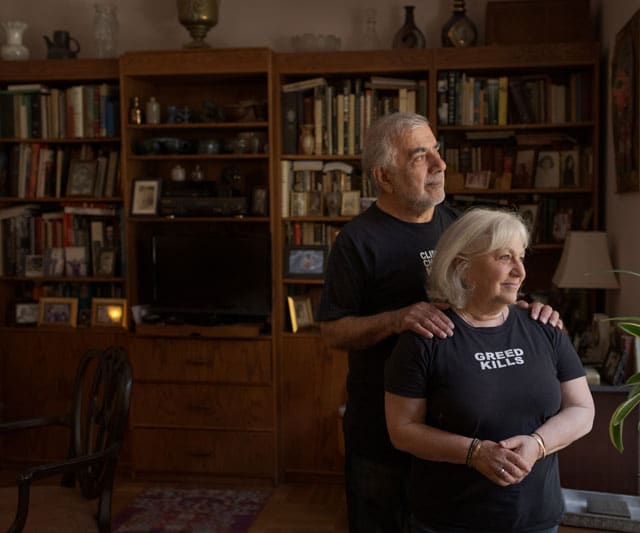Real estate has fueled the sunshine state for 100 years – since New York City’s sub-zero winter of 1922 triggered Carl G. Fisher to rent a lighted Times Square billboard to flash “It’s June in Miami” to snowflake dodgers.
Realtors at a recent gathering are bullish that Florida is still on the upward trajectory that the hoosier huckster started a century ago.
“There’s so much noise out there in the marketplace of social media from people who have nothing to do with real estate but are like Chicken Little: ‘The sky is falling!’” said Peter West of Bishop West Real Estate in Adams, Mass., who spoke this month at the Florida Realtors’ trend summit in Orlando.
“The mainstream media, the public, the Chicken Littles say, ‘The market is crashing.’ Yes, the market is down. It’s not 2020. It’s not 2021. But that was (a high driven by) a global health crisis,” West said.
The Florida trade group’s chief economist, Brad O’Connor, said that high time was in no small part because of historic low mortgage-interest rates and skyrocketing prices during the pandemic.
For two years, 30-year fixed rates were below 3%. Employees worked remote from home, setting some on the move.
In 2021, the comparative year for the current 2022 data, Florida’s housing market was “on a sugar high,” O’Connor said. “The Fed said, ‘We’re going to take your candy back now.’”
It’ll be long-term trends that demonstrate Florida’s resiliency, not the boom-and-bust, said John J. Adams, president of Adams, Cameron and Co. Realtors.
“When people are saying, ‘Housing prices aren’t growing as fast as they were a year ago,’ I say, ‘Yeah, well they had been growing 20% for two years in a row, and that just wasn’t sustainable.’”
As the market gets back to normal, some sellers have to swallow a tough pill in reducing prices to compete for buyers, said Kara Wisely, a Berkshire Hathaway HomeServices Florida Realty broker associate.
But there are advantages to no longer having eight offers on the table in the first two days on the market, the realtors said. Buyers and sellers both can take the time for full conversations based on logic and data, not the emotion of a boom market.
For many buyers who are selling homes in more expensive states to buy in Florida, real estate is part of their retirement investment portfolio. Its resale value can matter as much as the lure of the initial price tag, Wisely said
Data points
Despite hyperbolic headlines, proof is in the pudding for Florida sellers.
Wisely said her sales now average less than five months from MLS listing to moving day -— 46 days on market until contract and 102 days to closing.
“I’ve been in the business a long time,” West told her, “and if you get an offer in less than 30 days on the market, that’s great. These are still good times.”
As 2022 ended, Florida’s housing market looked similar to market years before the pandemic, according to Florida Realtors’ latest housing data.
“Overall, closed sales in 2022 were pretty good when you look at the more ‘traditional’ housing market years of 2018 and 2019,” O’Connor said.
Plus, the statewide inventory of existing homes and condos for sale gained, and median sales prices rose, both despite headwinds from inflation and interest-rate hikes, data show.
Most Florida home sellers received their full asking prices in 2022 — 100% for a median of single-family houses and 99.9% for condo and townhouse sellers, according to the trade group data.
At the end of 2022, Florida’s closed sales of existing single-family homes totaled 287,352, down 18% compared to December 2021, according to Florida Realtors’ research data and local Realtor boards and associations. Their median price was $402,500, up 15.7%.
Sales of condo-townhouses in 2022 totaled 125,494 units, down 21.7 percent compared to December 2021. The statewide median was $306,500, up 21.6 percent.
At the end of December, Florida’s housing inventory in active listings stood at a 2.7-months’ supply for single-family homes and 2.8-months for condo-townhouses.
“The good news is, we have a lot more inventory than what we had over the pandemic years,” O’Connor said. “Active listings of single-family existing homes more than doubled from a 1-month supply at the end of 2021 to a 2.7-months’ supply at the end of 2022.
“If we get a little relief in mortgage rates, then all the other factors are still there that make Florida appealing and a strong draw for buyer demand,” he said.
Goldilocks supply
O’Connor is turning his attention to the supply side.
“Prices are determined by both demand and supply,” he said. “Falling demand is only one ingredient needed for a large correction. We also need a flood of supply. In the last housing cycle, this came from overbuilding and foreclosures.”
O’Connor said he doesn’t expect that to recur.
First, the Covid-19 public-health emergency reduced the number of homebuilders working in Florida, he said.
Second, building firms that survived are more conservative about starting new builds, gun-shy from the 2008 financial crisis. However, he said, the Covid fallout is ubiquitous and nowhere near the magnitude of the global financial crisis that started with a subprime mortgage debacle.
Both factors make new-home builds take longer to complete, further reducing supply in the near term, O’Connor said.
Owners of existing properties can be reluctant to put them on the market, even if they want to, when new interest rates cost them significantly more in the long-term for a new place to live, he said.
“I think we’ll see mortgage rates stay just above 6% for a while,” O’Connor said.
High homeowner’s insurance that Florida still does not have under control also will dull demand for some months to come — especially if rates start rising again to 7% or higher, he said.
“So, it’s true some owners are feeling ‘locked-in’ to their current home and current mortgage rate, but it’s not all homeowners,” O’Connor said.
Yet, inventory is still gaining, and O’Connor said he expects prices to relax, “but we’re not going to see a great drop unless or until we see more supply available,” he said.
Crystal balls
Consumer confidence — the wild card -— continues to rise post-pandemic in most of the U.S., but not with the same vigor as a year ago, said John Leer, chief economist at Morning Consult.
How consumers are affected by the economy and inflation, and how they feel about other things going on in the world around them, all factor into their buying decisions or saving habits, he said.
“It’s going to take a prolonged period of real wage growth and fairly stable policy outcomes for consumers to feel more comfortable and confident about the economy and their future,” Leer said.
O’Connor said that time may have come and just not yet reached data and surveys. “Goods are almost returned to normal,” he said. “China is now reopened.”
Because housing and homeownership are top priorities for most consumers, the real estate market may be a canary in the economic coal mine.
“Housing prices are beginning to flatten but continue to resist declines as buyer interest perks up,” Leer said. “Buyers are still waiting in the wings, interested in purchasing a home as soon as they’re able to do so financially.”
Survey data that Morning Consult captured in December to gain insight into consumer attitudes and concerns weren’t good. Credit balances were at the highest rates since its tracking began, Leer said.
“Research shows more consumers are finding it difficult to make ends meet at the end of the month, and the share of adults able to save each month continues to shrink,” Leer said.
Inflation is still the major drawback, even though it is cooling, Leer said.
“Consumers are under financial stress, and they’re trying to downsize their spending,” Leer said. “Over the last two months, what we’re seeing is the outlook for the U.S. economy has really deteriorated, particularly among consumer fronts. Consumers have exhausted their sources of spending.
“We expect to see consumers continue to draw back from spending as small business and other sectors reduce hiring, expenditures and otherwise also contract,” Leer said.
Linda Hildebrand is a longtime newspaper editor and consumer-action reporter.







